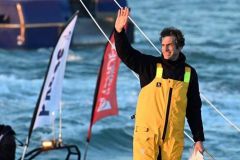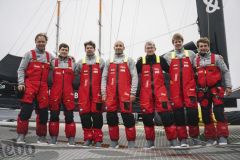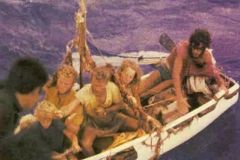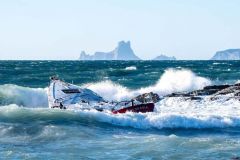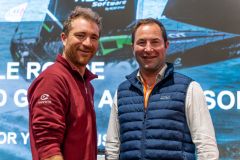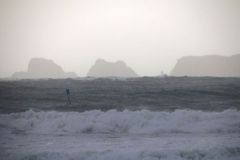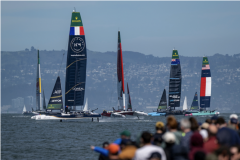Philippe Poupon's spectacular rescue
For the first edition in 1989-1990, 13 participants set off from Les Sables-d'Olonne on November 26, 1989. Only seven succeeded in completing this first solo round-the-world race, won by Titouan Lamazou on March 15, 1990, in 109 d 08 h 48 min 50 s on Ecureuil d'Aquitaine II.
But this first edition was also marked by the rescue of Philippe Poupon, whose boat ended up on the edge. Three boats were diverted, but it was Loïck Peyron who was first on the scene and came to his rescue. Under sail, he towed the downed IMOCA, which his skipper managed to right once the mizzen mast had been let go. The scene, filmed in its entirety by Loïck Peyron, went round the world and began to make the Vendée Globe a legend.
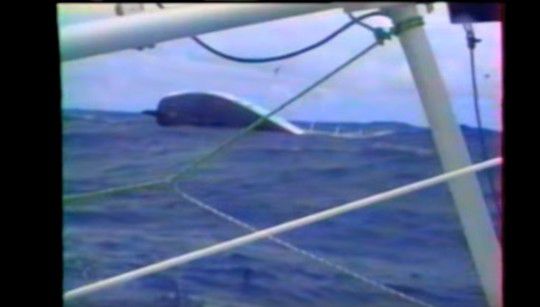
Two deaths and one incredible feat
The second edition (1992-1993) was marked by two tragic events. The disappearance of Englishman Nigel Burgess on the first night of the race, in the Bay of Biscay. He was found drowned on November 26, 1992 at Cape Finisterre, floating in his survival suit with his beacons, while his boat was found intact.
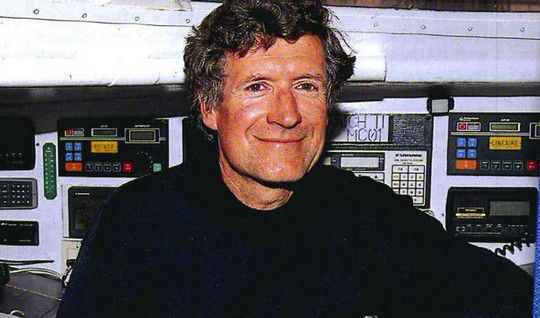
But also by the American Mike Plant (2 e participation) on his way to the start in Les Sables-d'Olonne, which he never reached. His boat was found empty in the Atlantic.
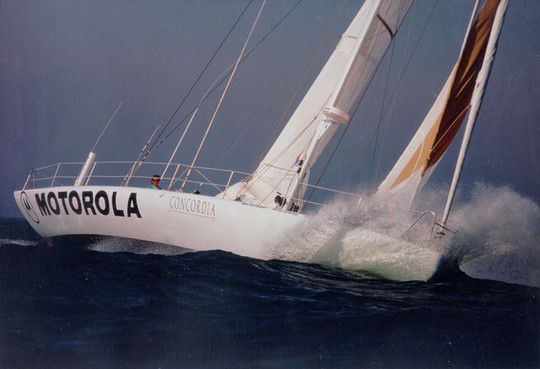
Bertrand de Broc's incredible feat is also worthy of note, as he cut his tongue deep into his face. He sewed it back on himself, guided remotely by doctor Jean-Yves Chauve. This episode will go down in legend, earning de Broc the nickname "Rambo"
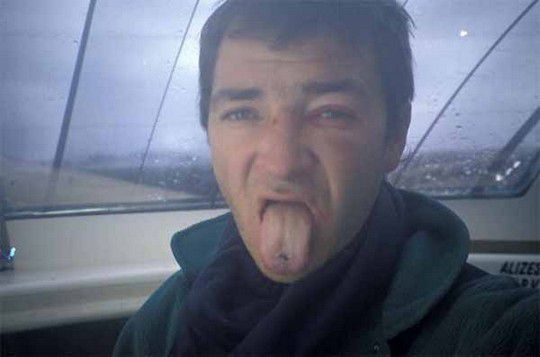
Of the 14 participants (originally 15) who set off on November 22, 1992, seven still managed to complete the loop. The race was won by Alain Gautier on March 12, 1993 after 110 d 2 h 22 min 35 s.
One disappearance and three unlikely rescues
There were 15 âeuros competitors, but 16 with Raphaà "l Dinelli "pirated" for lack of qualification in âeuros time, who took part in the 1995-1996 edition. Only 6 finished the race, which was won on February 17, 1997 by Christophe Auguin in 105 d 20 h 31 min.
This year's event was marked by the violent sinking of Raphaà "l Dinelli, who capsized twice on December 25, 1995, after setting sail in the Indian Ocean, south of Australia. The sinking skipper âeuros waits 36 hours in 3-degree water, first astride his upturned 60-footer, then in a life raft. Pete Goss unwound his 50-footer in apocalyptic conditions, but managed to save Dinelli, clinging to a rope and beset by "near-death" surfers, as the rescuer explained. For the anecdote, Raphaà "l Dinelli is forced to urinate in his wetsuit with integrated waterproof booties. His urine froze, causing severe frostbite. The next model was equipped with a fly and removable socks.
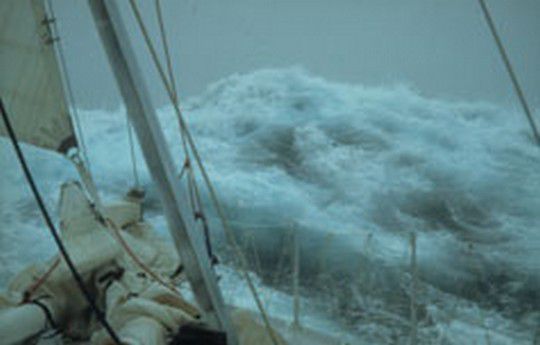
Au 64 e day of the race, two beacons are triggered, that of Tony Bullimore and Thierry Dubois. The two men were sailing 15 miles apart, 2,500 km from Australia, in huge seas (65-70 knots of wind). Tony Bullimore capsized, but managed to find refuge in an air pocket on the boat, which had been left upside down, without light or food. Thierry Dubois, out of the race following a technical stop in South Africa 15 days earlier, capsizes and dismasts. He was eventually rescued by helicopter. Bullimore's boat was also spotted, but with no sign of life. We had to knock on the hull to see the sailor emerge from the icy water.
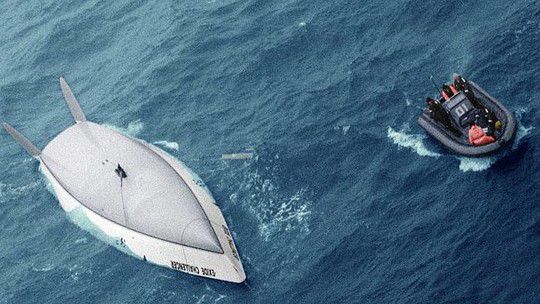
On January 7, 1996, Gerry Roufs' beacon stopped transmitting. The day before, he had told Isabelle Autissier âeuros was out of the race after being forced to make a stopover at Cape âeuros a Dantesque storm with " waves as high as the Alps ." The latter, sailing in the same area, began a search, but her boat capsized several times in winds of up to 80 knots. Weakened, she resumed her route, a decision that would prove controversial for Philippe Jeantot, organizer of the event.
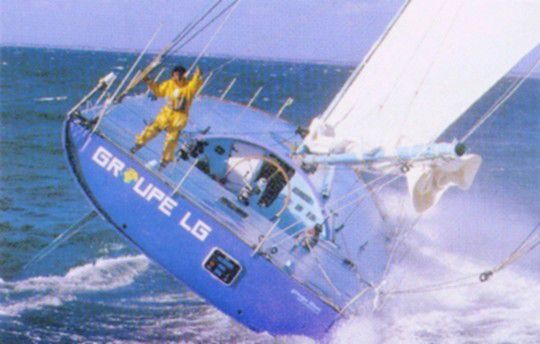
Marc Thiercelin, Éric Dumont and Bertrand de Broc surveyed a huge area of the Pacific in vain. In 1998, pieces of Groupe LG2 were found on an island in Chile.
New rules
In the wake of this mournful event, new rules will gradually be introduced from the 2001-2002 edition onwards:
- The boat's appendages (keel and rudder) and part of the hull must be fluorescent
- Boats must be able to right themselves after capsizing
- Course markers have been introduced to prevent solo sailors from reaching latitudes that are too dangerous or too close to the ice, like the ice exclusion zone.
Following the introduction of these new rules, there have been no further fatalities.
A terrible accident and an epic rescue in 2008
On December 18, 2008, Yann Eliès broke his femur and pelvis 800 miles off Australia. He was in excruciating pain, and had to make superhuman efforts to take refuge inside his boat, where he sought painkillers. He waited 36 hours for help. Guillemot retreated, then the Australian Navy evacuated the Generali skipper. Yann will recover after a long rehabilitation, but his boat is lost.

On January 5, 2008, Jean Le Cam capsized following the loss of his keel bulb as he rounded Cape Horn. He was on the phone to Vincent Riou, who immediately understood the seriousness of the situation and rushed (with Armel le Cléac'h) to rescue him. When he arrived on the scene, "Roi Jean" was safely in the bow of his boat, partially filled with water. PRB's skipper managed to rescue him, but damaged his boat in the process (breaking an outrigger) and PRB dismasted the following night. Forced to abandon, he finished 3rd e ex aequo, an honorary ranking.
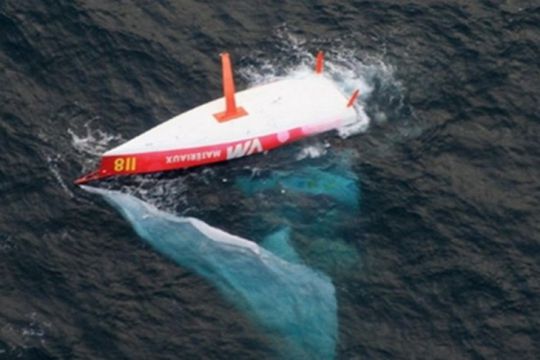
2020, Kevin Escoffier sees his PRB split in two!
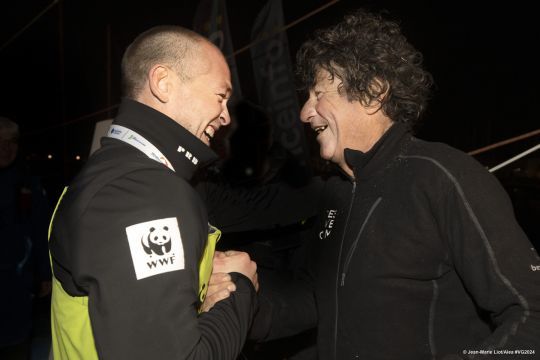
Off Argentina, Kevin Escoffier on PRB was in 3rd position when, after crashing into a wave, the bow of his IMOCA rose vertically. The boat had just split in two and was about to sink, leaving the skipper just enough time to put on his survival suit and inflate his raft. Quickly spotted by Jean Le Cam, he spent a night in his raft before being rescued by the skipper. He was disembarked 5 days later after crossing with a French Navy frigate.

 /
/ 










